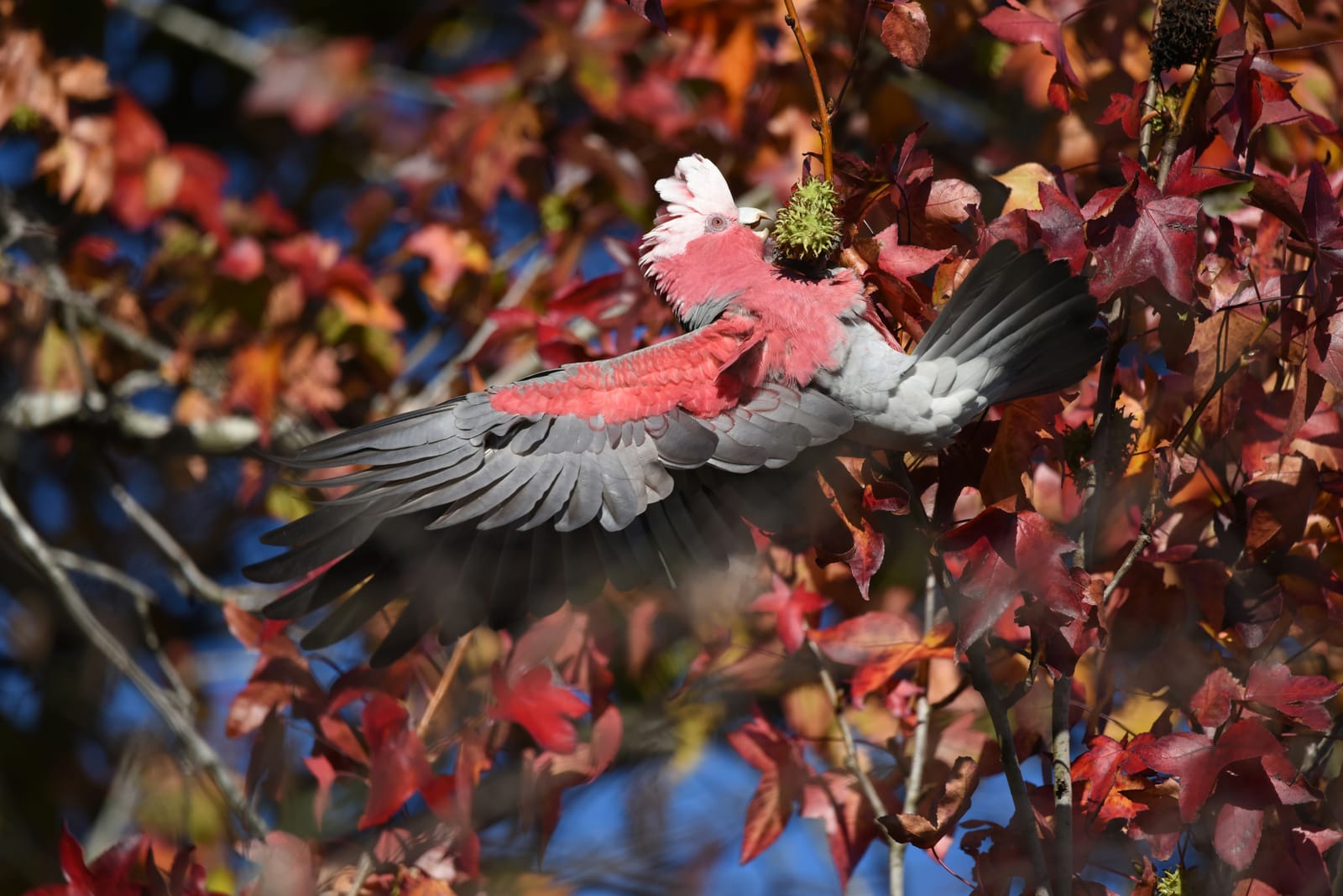With Pat O’Malley
Most people would be likely to accept that birds play, just for the fun of it. I suspect everyone has seen Galahs hanging upside down from branches and power lines, there are records of Galahs taking turns to walk over each other, and plenty of play fighting goes on. It’s even been noted that when engaging in play fighting, Galahs hold their crest in a different position from when they are in earnest, presumably to reassure the game partner.
Galahs certainly aren’t alone in all this. All the cockatoos and parrots play, and Australian Magpies not only hang upside down off branches but have been recorded hanging by one foot on a rotating Hills Hoist. In fact, Magpies may be the most playful birds we have, being known to play hide and seek, and even uttering shrieks when discovered, just like human kids.
Some scientists have a great deal of difficulty accepting that birds can do things just for fun, preferring rather to find a function that apparent play performs. So, for example, it is routine to argue that juvenile play fighting is practice for necessary combat skills later in life. In many cases, this may be so, although I think the argument often confuses cause with effect – a bit like suggesting that we go to comedies in order to exercise our lungs.
It may be good for us, but that’s not why we do it. And birds do have the same neurochemicals that are basic to pleasure. One of the reasons behind this scientific resistance to bird fun is the long-standing assumption that humans and animals are separated by a gulf. Of course this has biblical overtones, and it does make eating them less guilt-inducing.
Since the 19th century scientists have followed suit, trying to establish the great divide.
One by one these supposed decisive differences have been shown to be wrong: brain size, convolutions in the brain, brain size to body mass, complex problem solving, language, gesturing and so on. It has led some folk to refuse to use the term ‘humans’ but prefer ‘human animals’ to emphasise the continuity.
Ravens don’t necessarily accept this patronising acceptance, arguing that IQ tests just measure what humans are good at, not what birds are far better at. After all, some birds had long distance navigation down to a fine art eons before humans even discovered the lodestone. While we humans attribute such things to that mysterious catch-all ‘instinct’, my Raven informants argue this is akin to believing in magic.






